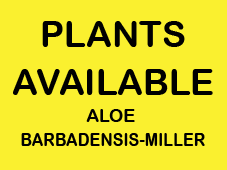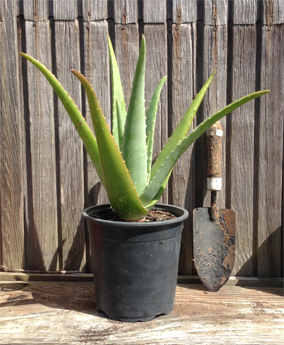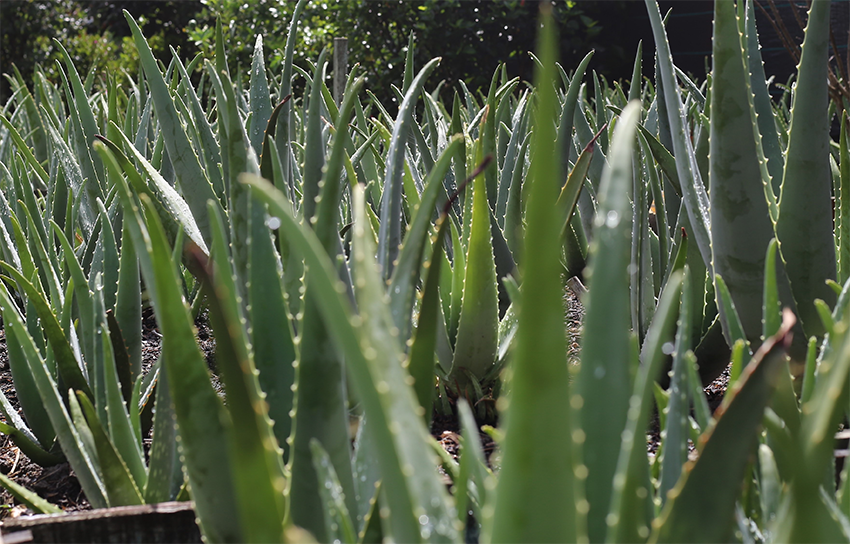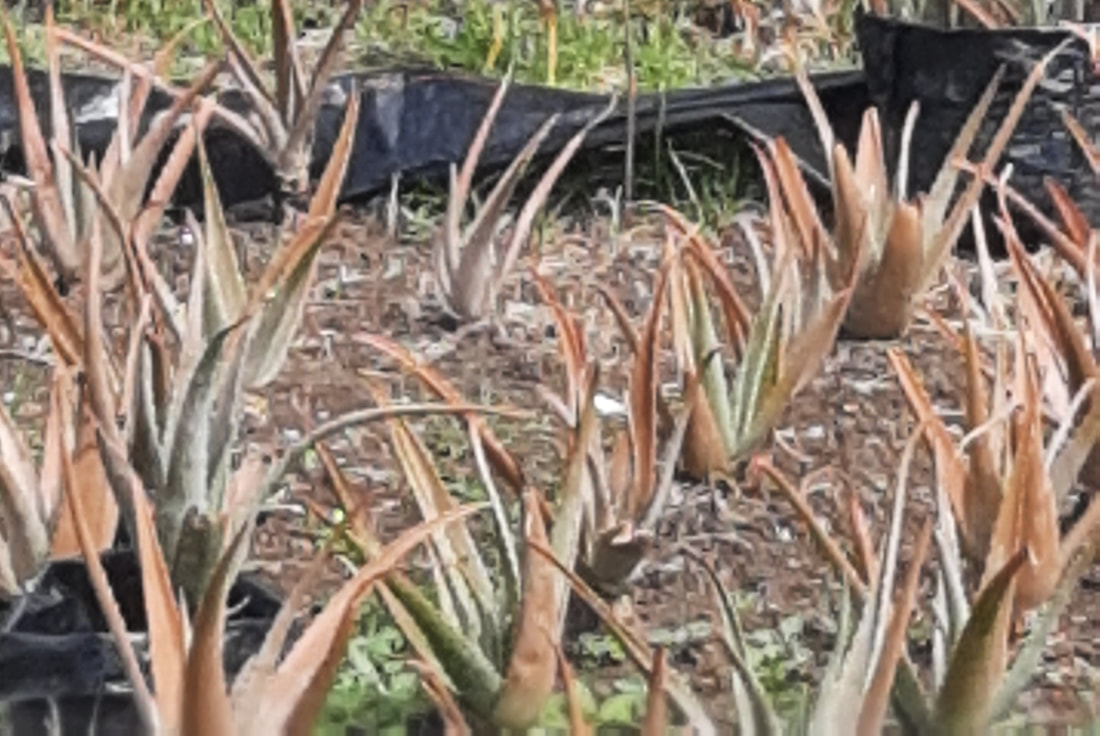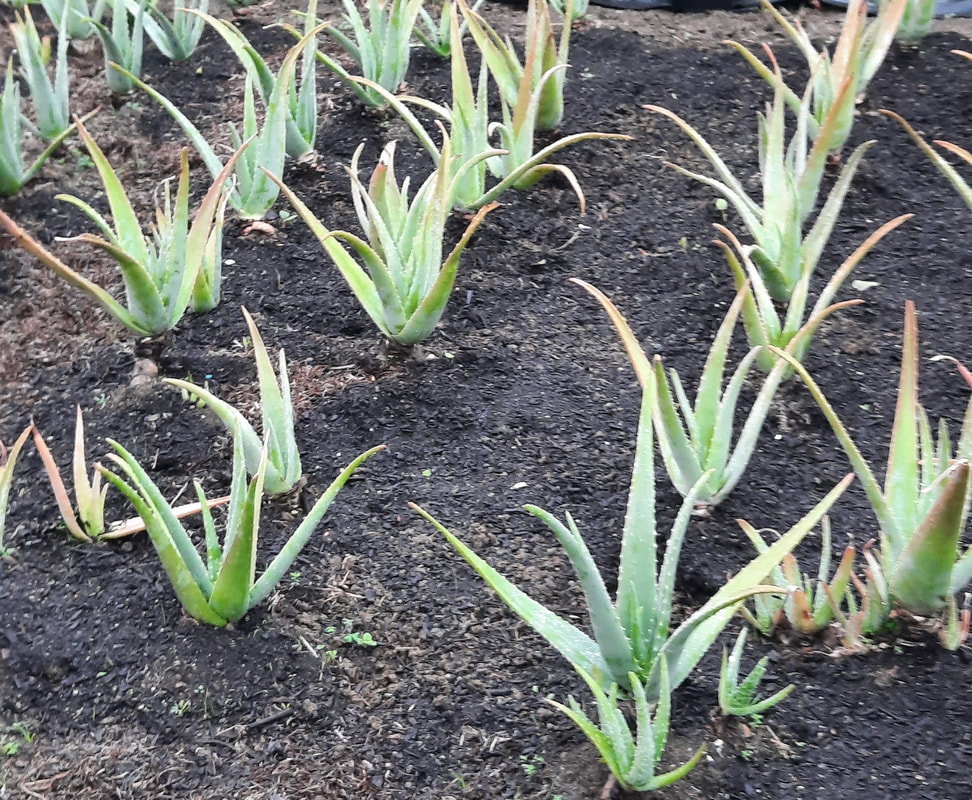|
ONE YEAR OLD PLANTS NOW AVAILABLE
$35 plus $12.5 freight in the North Island and $22 Sth Isl. NOTE: Plants are packaged without pot and will need to be either potted or planted in good rich soil within one or two weeks of receipt. Plants may brown whilst addapting to new environment. Do not worry, the plant will return to it's natural green if planted or placed in sunny position. Water sparingly. |
Aloe Barbadensis and Aloe Barbadensis-Miller are probably the most maintenance free plants or crops to grow. They have no pest problems and even goats don't eat it. Snails can leave tracks on the outer skin but this does not affect the inner gel. It is purely a cosmetic inconvenience. Keeping plants weed free is advisable and that will generally deter snails but beyond that there is little that needs to be done. There are however methods that will help to produce healthier plants and a more abundant harvest.
Plants thrive in WARM, WELL DRAINED conditions. Frost will cause the plants to be dormant. It can kill them because the moisture from thawing makes the inner centre of the plant continually moist which will eventually rot the new growth. Growing in pots in a sunny spot is good if you don't have a suitable outdoor area but don't water too often. Plants grow faster and bigger in the ground. Growing for your own use The plant on the right is fully grown. It is over one metre tall and it's outer leaves are up to 90 cm long when picked. It is growing in Titirangi in Auckland with five other plants of approximately the same size. When planted they were about 20cm tall (about the same size as the plants we sell for $30.) and they reached their full size in the third Summer after planting. As you can see in the picture a number of pups (plant-lets, root-shoots) have grown from the root. This is their natural method of propagation. Most healthy plants will deliver an average of about 3 pups every one or two years, some 4 or 5, some one or two. The soil bed was built up about 30cm to allow drainage in the winter months. Titirangi, like much of Auckland, has a clay base (the NZ famous Crown Lynn pottery comes from this clay) about 20 cm to 30 cm beneath the top soil. Clay does not allow for good drainage so the area needed to be raised to allow the rain water to escape the roots of the plant. Roots don't grow very deep but mostly they grow laterally. Aloe Vera does not like wet feet. The roots can not sit for prolonged periods in very wet soil. They will eventually rot. It does, after all, have it's origin in tropical and arid environments. (Central Northern Africa originally however thrived in tropical climates when relocated through traders around 600BC ). It was found growing in Barbados by an English/Scottish botanist named Phillip Miller who was the head botanist for the Royal Society in England. Because of the plants extraordinary health and size compared to the original African aloe of the same aloe variety/species, he laid claim of some sort to its discovery and, like most scientists, attached his name to the plant calling it Barbadensis-Miller. Barbadensis being the original Anglo botanical reference to the plant. Generally there is no need to water an Aloe plant - they are remarkably resilient. Although I refer to Titirangi that is because we lived there many years ago. Our farming of the aloes is now North of Auckland around the Matakana area. IF YOUR PLANT LEAVES GO BROWN AFTER PLANTING, don't be too concerned. Your plant/s will recover. This can sometimes take six to eight weeks. Much more quickly in drier, warm conditions. I have had plants that have been out of the ground with roots exposed for up to three months over the hot summer and then planted them. They looked like they would never recover however after about six weeks they started to green slightly and nine weeks later the leaves were full of gel and lush green. So - you have planted a small plant - now sit back and be very patient AND don't water it too often. As long as you follow the growing instructions and information, we will guarantee your plant. HARVESTING
It is not wise to pick leaves from young plants. Plants should be at least two years old or leaves about 40 to 45cm long (minimum) before you separate them. Ideally plants should be three years old before you harvest regularly. A mature plant will produce about 16 to 18 leaves a year. If you need any advice or information email: [email protected] but please bear in mind I am not a cell phone emailer as I am often playing with the plants and my hands are dirty. |
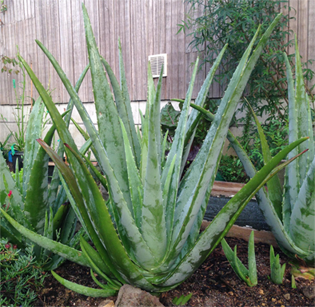
Mature plant approx 1 metre tall with leaves ranging from 60cm to 90cm in length ready to pick.
|

